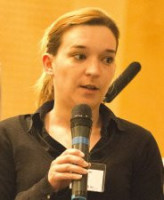Pandemics & Infectious Diseases
Zoonose & Vector Borne Diseases
Post-Doctoral Fellowships
France
2012.05.31
Contribution of human and viral factors to dengue virus assembly
A key step in the virus life cycle is assembly, a process during which structural and genetic components of the virus come together to form viral particles that will be released from infected cells. This process has to be tightly regulated both spatially and temporally. Dengue has become a major threat to public health. My focus is to understand the contribution of the dengue capsid protein to assembly, using molecular virology, confocal microscopy and biochemistry Where does capsid localize in infected cells, and which human and viral factors are involved in assembly are the questions I investigate.
Stopping a virus in its tracks
To add or modify information on this page, please contact us at the following address: community.research@axa.com

Fanny
TURLURE
Institution
Institut National de la Santé et de la Recherche Médicale
Infectious Diseases and Microbiology Institute
Country
France
Nationality
French
Related articles
Medical Treatment & Drug Development
Pandemics & Infectious Diseases
Antimicrobials, Antibiotics & Drug Resistances
Bacteria & Other Microorganisms
Drug Delivery
Mécénat des Mutuelle
France
New Molecule to Combat Antibiotic-Resistant Childhood Sepsis
The global spread of antibiotic resistance requires the identification of new bacterial drug targets, the design and synthesis of innovative... Read more

Nalini
RAMA RAO
Institut National de Recherche pour l'Agriculture, l'Alimentation et l'Environnement
Pandemics & Infectious Diseases
Climate Change
Healthcare Systems
Zoonose & Vector Borne Diseases
Climate Adaptation & Resilience
Global Warming
Public Health & Health Policy
AXA Project
United Kingdom
New Observatory on Dengue Outbreaks
Vector-borne diseases – human illnesses caused by parasites, viruses and bacteria transmitted by living organisms such as mosquitoes, ticks, and... Read more
Oliver
BRADY
London School of Hygiene & Tropical Medicine
Pandemics & Infectious Diseases
Terrestrial Biodiversity
Climate Change
Zoonose & Vector Borne Diseases
Wildlife & Invasive Species
AXA Award
Switzerland
Grand Jet d'Or Award on Planetary Health
The Covid-19 pandemic has highlighted our fragility as societies in the face of zoonoses, diseases that appear in the animal... Read more
Geneva Health Forum
(GHF)